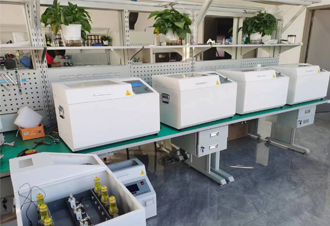 English
English


oil friction test machine
Understanding the Oil Friction Test Machine
In the realm of tribology, the study of friction, wear, and lubrication, the oil friction test machine plays a pivotal role in evaluating the performance of lubricants under various operational conditions. Understanding how these machines function and their importance in industrial applications can provide valuable insights into improving machine efficiency and lifespan.
What is an Oil Friction Test Machine?
An oil friction test machine is a specialized device designed to measure the frictional properties of various lubricating oils under controlled conditions. These machines simulate the tribological interactions that occur in machinery, allowing engineers and researchers to assess how different lubricants perform when subjected to heat, pressure, and varying speeds.
Typically, these machines consist of a testing rig that includes two surfaces in contact — typically a rotating shaft and a stationary block. The lubricant is applied to the contact area, and the machine measures the frictional force, temperature variations, and wear rates. By adjusting parameters such as load, speed, and temperature, users can replicate a range of real-world conditions, making it a versatile tool for lubricant evaluation.
Importance of Testing
Testing lubricants in an oil friction test machine is critical for several reasons. First, it helps manufacturers and engineers select the appropriate lubricant for specific applications. Different machines and engines have unique operating conditions, and using the wrong type of lubricant can lead to increased friction, overheating, and ultimately, equipment failure.
oil friction test machine

Second, the test results provide essential data for the formulation of new lubricants. By understanding how different chemical compositions affect friction and wear resistance, researchers can design more effective lubricants that enhance performance and offer better protection against wear.
Moreover, regular testing helps ensure compliance with industry standards and regulations. Many sectors, including automotive and aerospace, have stringent requirements for lubricant performance to ensure safety and reliability. The oil friction test machine helps companies verify that their products meet these necessary benchmarks.
Applications Across Industries
The applications of oil friction test machines extend across various industries. In automotive engineering, they are utilized to evaluate engine oils, ensuring they provide adequate protection under the heat and stress of operation. In manufacturing, these machines examine the performance of lubricants used in gearboxes, bearings, and other critical components.
Aerospace industries also heavily rely on such tests to ensure that the lubricants used in aircraft engines can withstand extreme conditions while providing optimal performance. Additionally, the renewable energy sector is beginning to use these machines to test lubricants in wind turbine gearboxes, which face unique challenges due to their operational environment.
Conclusion
In conclusion, the oil friction test machine is an essential tool in the field of tribology, offering insights into the performance of lubricants under various conditions. By simulating real-world scenarios, these machines assist in the selection, formulation, and compliance of lubricants across a multitude of industries. As technology advances and the demand for efficient machinery grows, the importance of understanding and utilizing these machines will only increase, paving the way for innovations in lubrication science.
-
Differences between open cup flash point tester and closed cup flash point testerNewsOct.31,2024
-
The Reliable Load Tap ChangerNewsOct.23,2024
-
The Essential Guide to Hipot TestersNewsOct.23,2024
-
The Digital Insulation TesterNewsOct.23,2024
-
The Best Earth Loop Impedance Tester for SaleNewsOct.23,2024
-
Tan Delta Tester--The Essential Tool for Electrical Insulation TestingNewsOct.23,2024





